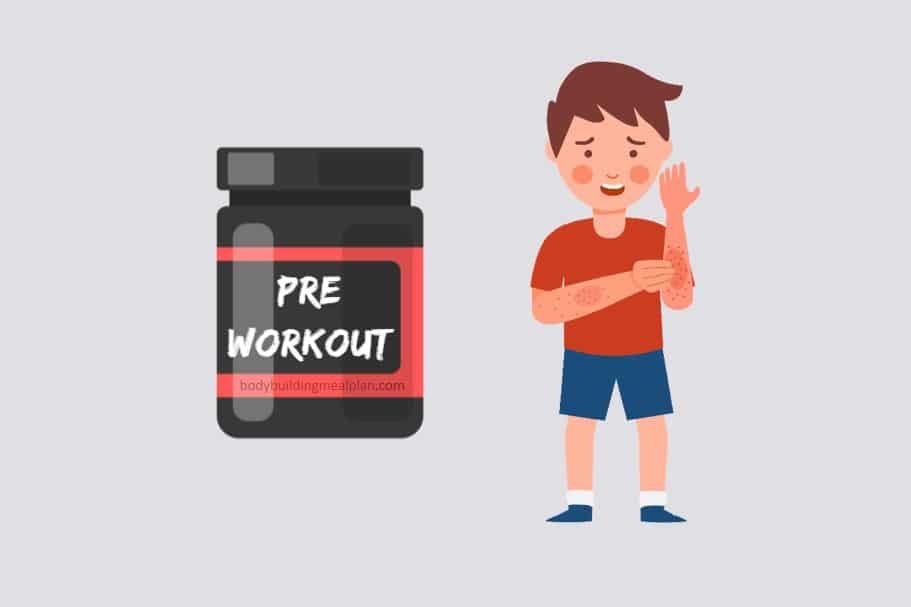Pre-workout supplements have surged in popularity among fitness enthusiasts, largely due to their promised ability to enhance energy, improve performance, and maximize workouts. However, a perplexing question continues to arise: can these supplements contribute to the development of acne? This article delves into the intricate relationship between pre-workout ingredients and skin health, examining both scientific insights and anecdotal claims. In so doing, it offers a shift in perspective that might pique your curiosity about these commonly consumed products.
Understanding Pre-Workout Supplements
Before diving into the potential skin repercussions, it is crucial to grasp what pre-workout supplements typically consist of. Most formulations include a blend of stimulants, amino acids, vitamins, and other performance-enhancing substances. Each ingredient aims to heighten endurance, boost focus, and increase muscle pump. Common constituents include caffeine, beta-alanine, citrulline malate, and creatine—each serving a specific function, albeit with varying effects on the body.
The Skin’s Microenvironment
To comprehend how pre-workout might affect acne, one must first consider the skin’s microenvironment. The skin is a complex organ home to a myriad of microorganisms, oil glands, and hair follicles. Acne often arises when these elements become unbalanced, typically due to factors such as excess sebum production, hormonal fluctuations, and clogged pores. Any supplement that influences these factors could potentially contribute to acne development.
Caffeine and Its Effects
Caffeine is a prevalent ingredient in many pre-workout formulas, primarily for its stimulant effects. While caffeine itself is not directly linked to acne, its impact on the body can have unintended consequences. For instance, caffeine consumption raises adrenaline levels and may lead to increased oil production in the skin. Excess sebum can clog pores, setting the stage for breakouts. Furthermore, the diuretic properties of caffeine can lead to dehydration, prompting the skin to compensate by producing more oil—an additional factor that may influence acne.
The Role of Beta-Alanine
Beta-alanine, another popular component, is renowned for its role in enhancing athletic performance. While not typically associated with acne directly, it can induce a tingling sensation—known as paresthesia—in some individuals. This skin reaction could exacerbate pre-existing skin conditions, as increased blood flow may lead to heightened oil production and inflammation in sensitive skin.
Citrulline Malate and Vasodilation
Citrulline malate is often included for its purported ability to increase nitric oxide levels, thereby enhancing blood flow to muscles during workouts. However, increased circulation can also lead to higher levels of perspiration. Sweat that combines with dirt and oil on the skin’s surface creates an ideal environment for acne-causing bacteria to thrive. As a result, those who engage in intense workouts with inadequate skin cleansing rituals may be more prone to breakouts.
Creatine and Hormonal Influence
Creatine, a widely recognized ergogenic aid, boosts energy production in muscle cells. However, research indicates that it may also have subtle influences on hormonal levels, including testosterone. An elevated level of testosterone can stimulate the sebaceous glands, which may lead to an increase in sebum production. This connection suggests a potential pathway through which creatine could indirectly contribute to acne, particularly in those predisposed to hormonal fluctuations.
Sugar and Artificial Sweeteners
Another area to scrutinize is the inclusion of sugar and artificial sweeteners in many pre-workout blends. Excess sugar can trigger spikes in insulin, leading to increased oil production in the skin. Moreover, artificial sweeteners have been linked to inflammation in some studies, potentially exacerbating skin conditions like acne. If consumed regularly, these additives could contribute to a cascade of negative effects on skin health.
Individual Variability and Sensitivity
It’s important to acknowledge that individual responses to pre-workout supplements can vary dramatically. Factors such as genetics, hormonal balance, skin type, and existing skin conditions all play a role in determining whether one might experience acne as a side effect. What might provoke breakouts in one person could have no impact on another. This variability necessitates a personalized approach to supplement use and skin health.
Recommendations for Minimizing Acne Risk
For those concerned about acne yet eager to experience the benefits of pre-workout supplements, several strategies can mitigate the risk. First, prioritize products that are free of artificial additives and excessive sugars. Secondly, maintaining a rigorous skincare routine—comprising thorough cleansing both before and after workouts—can minimize the likelihood of clogged pores. Additionally, ensuring adequate hydration can help the skin manage oil production more effectively.
Conclusion: Reassessing Pre-Workout Necessity
While the quest for enhanced physical performance is commendable, one must weigh the potential skin ramifications of pre-workout supplements. Although the scientific connection between these formulations and acne may not be definitively established, several factors suggest a plausible link. By maintaining awareness and practicing diligent skincare, individuals can make informed decisions regarding supplementation and its effects on their skin. Ultimately, the ultimate goal should be to support both physical performance and overall skin health—striking a balance that promotes a holistic approach to wellness.

